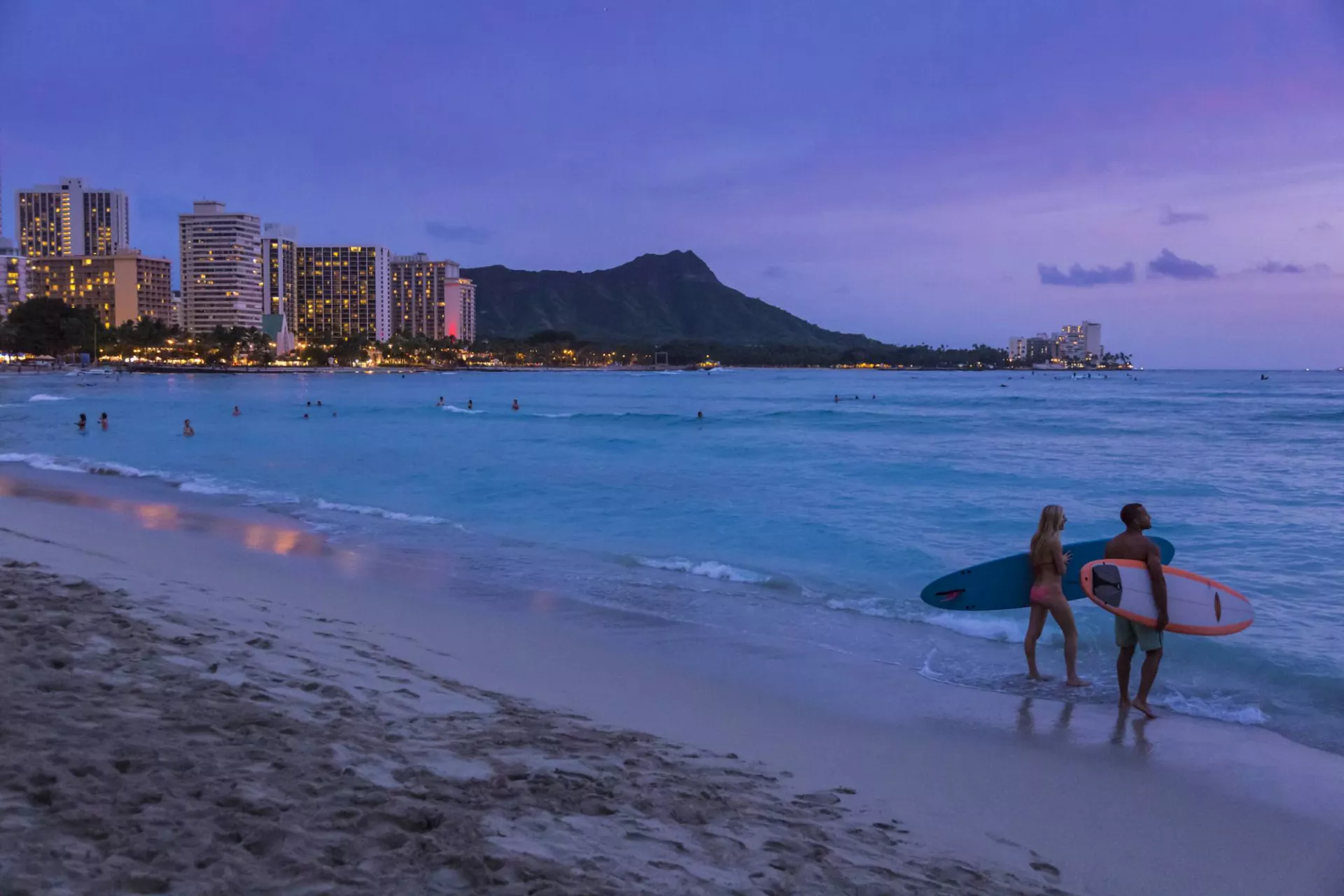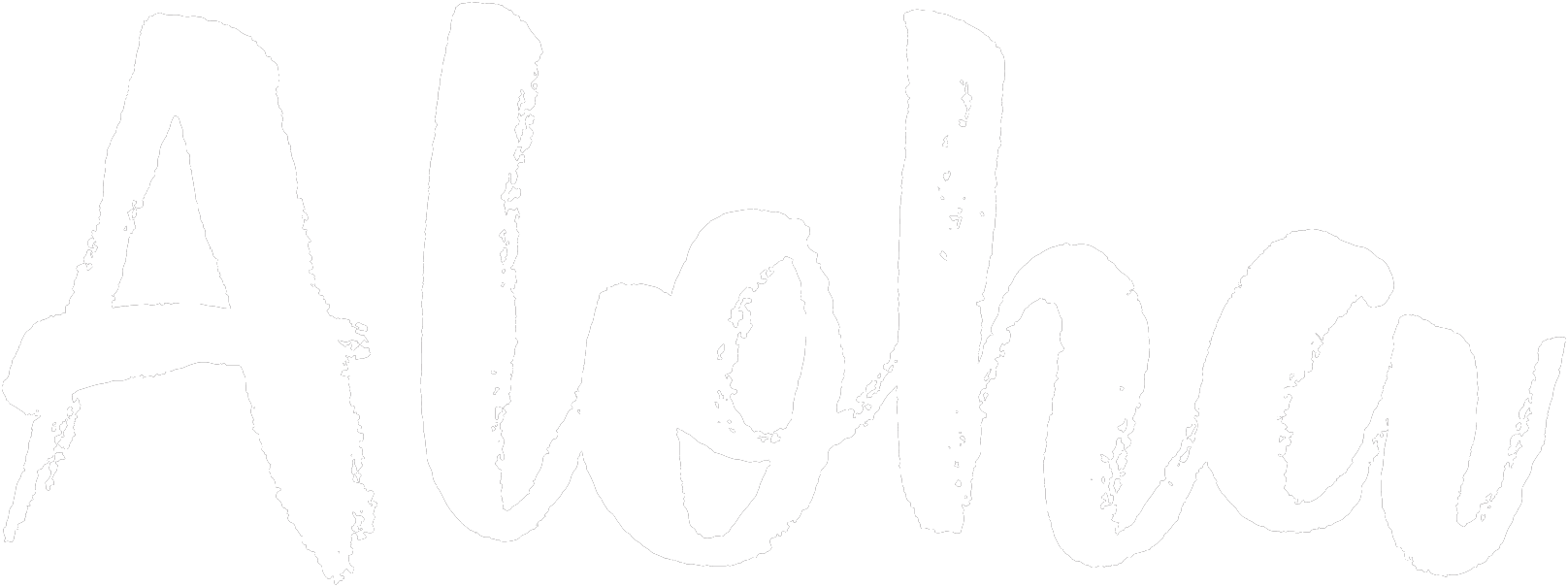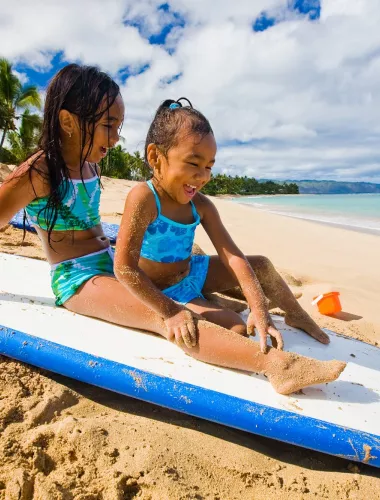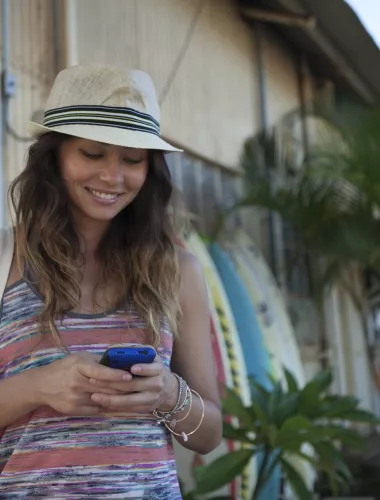
 More About Hawaii
More About Hawaii
Frequently Asked Questions
Current Travel Requirements
International Visitors Travelling to the Hawaiian Islands
The State of Hawai‘i is in alignment with federal international requirements. There are no additional State of Hawai’i requirements for passengers flying directly into Hawai’i from an international destination.
Travel from the U.S continental US
No travel restrictions at this time.
Time Difference
Hawaiʻi follows Hawaii-Aleutian Standard Time (HAST), which is 10 hours behind the Coordinated Universal Time (UCT-10). It is five hours behind Eastern Standard Time and two hours behind Pacific Standard Time. Hawaiʻi does not observe Daylight Saving Time, so add one extra hour to the time difference during this period (March through November). For the current time in Hawaiʻi, click here.
When to Visit
Anytime is a good time to visit Hawaiʻi. The average temperature here is between 75˚–85˚ F (24˚-29˚ C). Summer, between April and November, is warmer and drier, while winter, between December and March, is a bit cooler. Trade winds keep things comfortable year-round.
Whale watching season begins in late December and ends in early May, with peak viewing occurring between January and early April. November through February is big wave surf season on Hawaiʻi’s north shores.
Medical Care in Hawaiʻi
We hope that you have a happy and safe vacation, but if you need assistance, here are answers to common questions.
Basic First Aid
Non-prescription medicines such as pain relievers, cold remedies and first aid treatments are available at drugstores, supermarkets and pharmacies.
Can I Get My Medication in Hawaiʻi?
If you are taking prescription medications, we advise that you bring them with you. It’s also a good idea to bring a copy of your prescription, physician contact information and your medical plan details.
How Do I Contact Emergency Services?
To call an ambulance, fire department or police, dial 9-1-1.
What Kind of Emergency Care is Available?
The Queen’s Medical Center is the major trauma center in Hawaiʻi, located on Oʻahu. There are additional hospitals located on each of the major islands.
Communication & Staying In Touch
Cellphones
Most major U.S. cellphone companies operate in Hawaiʻi, and local cellphone calls are usually included in nationwide or domestic calling plans. Please check your provider as roaming charges may apply for some plans. If you are traveling from another country, check with your cellphone provider regarding an international calling plan, service fees and whether your phone will be compatible. You may also rent a mobile phone after you arrive. As you explore the islands, please remember that due to the varied terrain, there are beaches, mountains and valleys where cellphone coverage is not available.
Charging Your Cellphone
Electricity in the U.S. is 115/120 volts at 60 cycles (60 Hz) per second. If your device does not accept this voltage, you may need to purchase a voltage converter.
International Calling
To call a Hawaiʻi number on a phone with international service, dial 1-808, and then the number. To dial from Hawaiʻi to another country, dial 1-country code, and then the number. Click here to locate the country code.
Internet & Wi-Fi
Many hotels in Hawaiʻi provide Internet or Wi-Fi connectivity for their guests. Please check with your hotel regarding costs, if any. Many coffee shops and restaurants also offer free Wi-Fi, or you can go to any City & County of Honolulu Hot Zone and get online.
Postal Service
The United States Postal Service (USPS) is an affordable way to ship letters and parcels to domestic and international destinations. Visit the USPS website to find the nearest post office location. Click here for a list of countries and mailing restrictions.
If your suitcases are overflowing with all of your wonderful finds, consider shipping your purchases home. In addition to the USPS, global delivery and logistics providers in Hawaiʻi include UPS, FedEx and DHL.

More Trip Planning Resources

Safety Tips
Helpful how-to's for keeping your family safe and secure on your trip to Hawaiʻi.
Read More
Getting Around Hawaiʻi
Hitting the road while you're visiting Hawaiʻi? Learn the basics of driver safety before you buckle in.
Read More
Useful Contacts
Local phone numbers and links that may come in handy during your Hawaiian vacation.
Read More